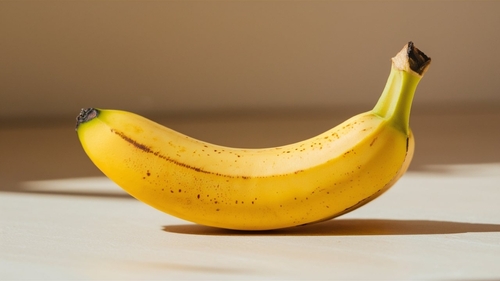At Remitly, we’ve got our finger on the pulse of international trends. When a new viral map of London started causing debate among city residents, we had to dig deeper. The concept of the “London banana” was created by author Saul Sadka when he attempted to outline the most desirable places to live and visit in London.
In this article, we’ll explain what the London banana is, which areas it covers, why it’s controversial, and what it tells us about life in London town.
What is the “London banana”?
The London banana is a U-shaped area that covers the parts of London that contain the supposedly most desirable neighborhoods. This hand-drawn map was originally shared on X by Saul Sadka in August of 2025.
Which areas are inside the “London banana”?
The banana supposedly contains all of the best neighbourhoods in London where you’re sure to have a great experience of the city, whether you’re looking for an apartment or a tourist destination. Here are some of the neighbourhoods that fall within the boundaries of the banana.
West London
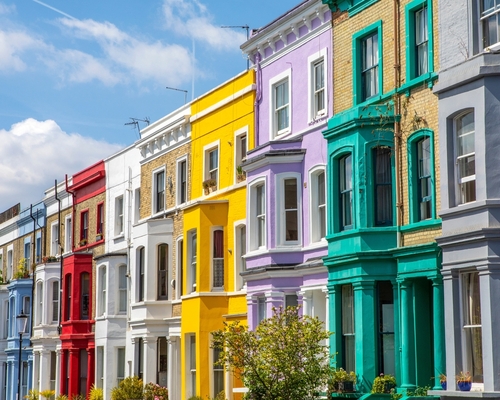
Known for its sophistication and charm, West London is home to elegant architecture, upscale dining options, and a mix of international and local communities. Locals and tourists alike are drawn to this area thanks to world-class attractions like Kensington Palace, Hyde Park, and the Natural History Museum.
- Notting Hill is home to the Portobello Road market. This takes place daily and offers everything from vintage clothing to antiques to food and fresh produce. Picturesque streets are lined with colorful houses, making this a great area to enjoy a stroll. The area also hosts Notting Hill Carnival in August, one of Europe’s biggest celebrations of Caribbean culture.
- Kensington is a neighbourhood for intellectuals. If you love a museum, you’ll love that Kensington is home to the Natural History Museum, Science Museum, and Victoria and Albert Museum. The neighbourhood is also home to Imperial College and Kensington Palace. It has a great high street for shopping and it is often cited as one of the most affluent areas of London.
- Chelsea is filled with exclusive residential areas that boast beautiful Victorian and Georgian architecture. You’ll find high-end shopping and dining in this area. Chelsea is home to the Chelsea Football Club and also hosts the Chelsea flower show.
North London
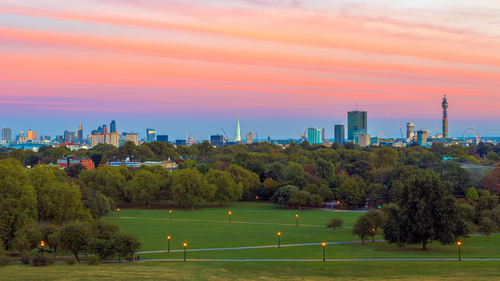
Best known for its trendy cultural scene and diverse neighbourhoods, North London blends urban excitement with a more relaxed pace of life. North London is home to iconic landmarks like the Camden Market and Hampstead Heath. It also boasts a lively pub culture and restaurant scene.
- Hampstead is a great option for anyone who wants the best of both worlds. You’ll have access to everything that London has to offer as well as relaxing green spaces. The natural beauty is not just nice to look at, it also provides a backdrop for recreation and outdoor activities. Don’t miss the bathing ponds or Parliament Hill in Hampstead Heath.
- Islington is known for its beautiful Victorian and Georgian architecture. It is also a cultural scene and home to many theaters and music venues. Although there are great options for dining and shopping in this area, the residential parts are known for providing a sense of community and calm.
- Primrose Hill isn’t just a stunning spot to get a view of the city. It’s also a great place to live. The village-like atmosphere of the neighbourhood is bolstered by well-preserved Victorian properties and leafy parks that invite you to slow down and relax.
South London
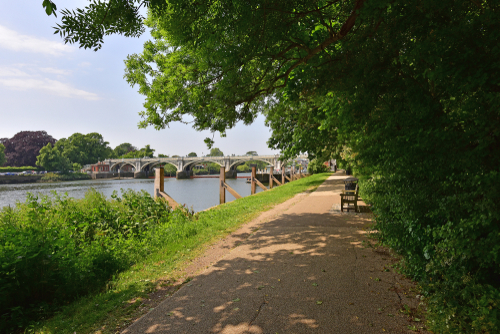
If you’re looking for an area that has it all, South London is for you. There are trendy cultural hotspots, historic sites, and green spaces. Visitors and locals are drawn into world-class food halls like Borough Market. This area caters to a range of interests from outdoor activities to art, music, and food.
- Richmond is set right on the River Thames and is home to large parks. You can even see wild deer in Richmond Park. You’ll also find the Kew Royal Botanic Gardens in this neighbourhood.
- Clapham is known for its large central park, Clapham Common. This area has a vibrant nightlife scene and plenty of dining options on the high street. Families and young professionals are drawn to the area’s residential spaces, giving Clapham a buzzing, youthful charm.
- Parts of Brixton are included in the London banana. Brixton is known for its vibrant cultural scene that is heavily influenced by its Caribbean and African residents. You’ll find food markets and street art here that lend to a lively atmosphere.
Although there are some variations amongst the different areas that are part of the London banana, they all share some commonalities. The general character of these areas are affluent, well-connected by public transport, and have leafy, green areas to enjoy.
Why is the “London banana” so controversial?
The map of the London banana sparked debate online because it’s exclusionary. The banana fails to include diverse and vibrant parts of London, especially in the East and South-East.
Additionally, the commentary with which the London banana was originally shared suggests that you cannot have a good or enjoyable time outside of the boundaries of the banana. The original post stated, “Almost everything outside of the banana is horrible these days, best avoid.”
Many Londoners feel that their neighbourhoods have been unfairly dismissed. One user on Reddit suggests that the banana is “nonsense” and that it misses key areas like Chiswick and Ealing. On the other hand, some residents of London believe that there is some truth to the banana, saying, “I live somewhere in the yellow area – can confirm, it’s nice.”
The controversy highlights the subjective nature of what makes a neighbourhood desirable. It also signals some shift in the demographics of London. One commenter pointed out that about a decade ago, the most sought after areas in London were all north of the Thames. Now, the banana includes a large area south of the river as well.
In response to the growing popularity of South London, someone pointed out that “housing costs are the main factor as to why people are more willing to move south to places like Sutton, Worcester Park, and Cheam.”
One Londoner defined themselves as “all city.” This commenter chimed in by suggesting that maps like the London banana or the now outdated idea that only the neighbourhoods north of the Thames are desirable were for particular people who only wanted to experience a small part of what London has to offer.
Ultimately, the London banana debate encourages us to do the research to figure out for ourselves what areas of London are alluring and what makes a neighbourhood worthy of calling home.
Beyond the banana: great areas the map misses
As many online commenters have already suggested, there are plenty of areas that lie outside of the London banana that are worthy of consideration. Here, we’re presenting you with some options that might otherwise be overlooked.
East London
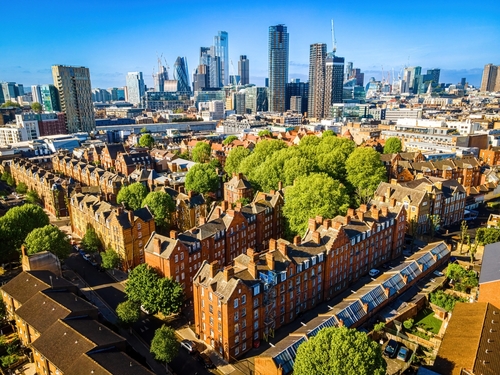
This area of the city is known for its creative energy. Streets become galleries thanks to murals and street art. There is also a vibrant and diverse food scene in East London that would make any foodie’s mouth water.
- Hackney is an area that is known for its lively and diverse arts and culture scene. Lots of bars and pubs create a strong nightlife culture. There are unique markets, like Broadway Market, and abundant green spaces.
- Shoreditch is London’s answer to Paris’ Marais neighbourhood. With vibrant street art, trendy nightlife, and lots of independent boutiques and shopping stores, this area is popular with young people and serves as a hub for the tech industry.
South-East London
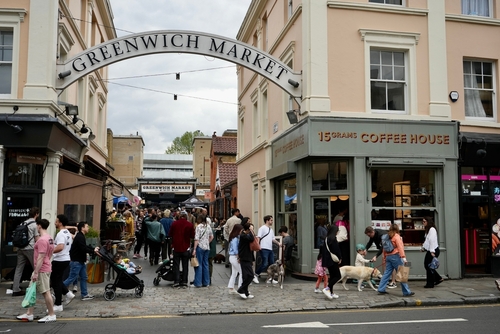
Praised for its strong community feel, South-East London is somewhere you might consider settling down. There are plenty of independent businesses in this area. It also boasts a rich history including Roman-era settlements and the historic Maritime Greenwich.
- Peckham is a good place for anyone interested in rooftop bars, art galleries, and street food. The area is home to a multicultural demographic of locals. The neighbourhood is known for its grit and urban realness, and it’s a place where industrial spaces are repurposed to be homes to art and culture. Although the banana offers posh, Peckham is often cited as one of the “coolest” neighbourhoods in London.
- Greenwich is a UNESCO World Heritage Site and is famous for its rich maritime history, Greenwich Market, and Greenwich Park.
North-East London
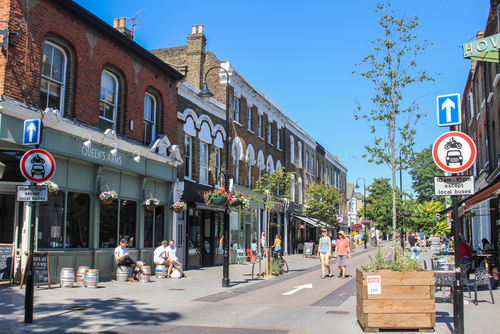
This area of London boasts a village-like atmosphere, despite being in the big city. It harbors a growing cultural scene. There are plenty of parks and green spaces, and the area is becoming better connected as transportation links develop.
- Walthamstow will give Notting Hill a run for its money, at least in terms of markets. Walthamstow is home to the longest outdoor street market in Europe, Walthamstow Market. This neighbourhood has a community spirit and supports a buzzing art scene. There are also plenty of green spaces for you to enjoy.
Banana or not, the idea that somewhere is a great place to live depends on personal preferences. You’ll be best-served by finding a place that suits your budget and lifestyle. London is a big city—it might be worth looking outside of the banana.
What to take away from this viral moment
Overall, the London banana was a hot take that was formed from one person’s experiences and opinions. The map has sparked a wider conversation about what makes any given London neighbourhood a good place to live.
While the map does highlight some lovely areas and most of the sights that tourists and visitors would love to see, it overlooks other neighbourhoods that are rich in culture, community, and opportunities. If you’re considering moving to London, ask yourself what your ideal neighbourhood looks like and how you’d like to live day-to-day.
FAQs
What is the London banana map?
The “London banana” is a U-shaped map that highlights the most desirable neighborhoods to live and visit in London.
Which neighborhoods are in the London banana?
The map includes traditionally affluent areas such as Kensington, Notting Hill, Hampstead, Islington, and Richmond, forming a banana-like shape across West, North, and South-West London.
Why does the London banana map cause debate?
The map is controversial because it excludes large parts of the city, especially East and South-East London. Many Londoners feel it presents a narrow and elitist view of the city, ignoring many vibrant and culturally rich neighborhoods.
Who created the London banana map?
The map was created by Saul Sadka, an author who has lived in London for most of his life and based the map on his personal experiences and perceptions of the city.
